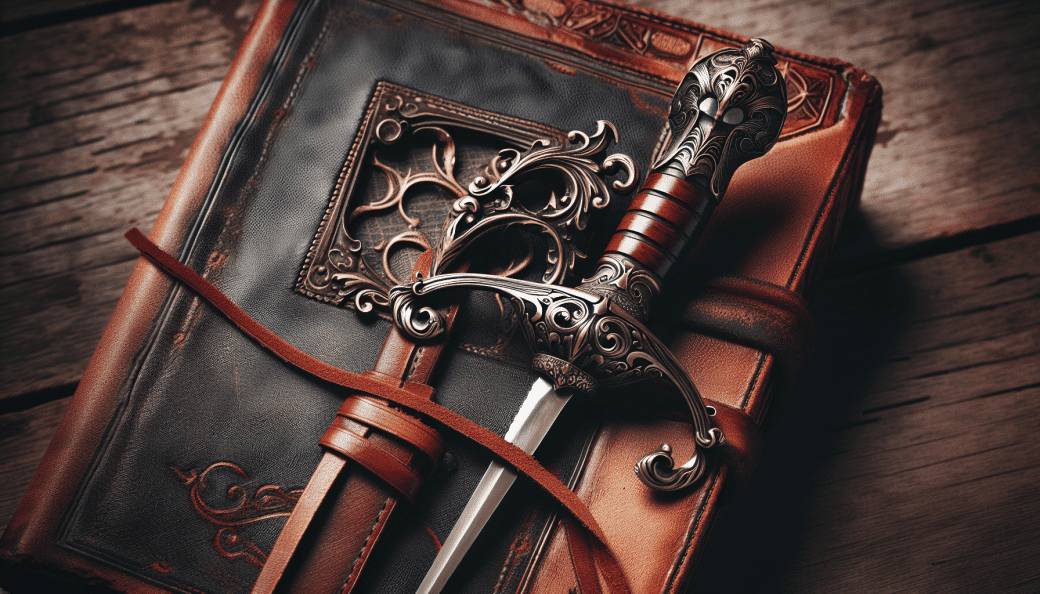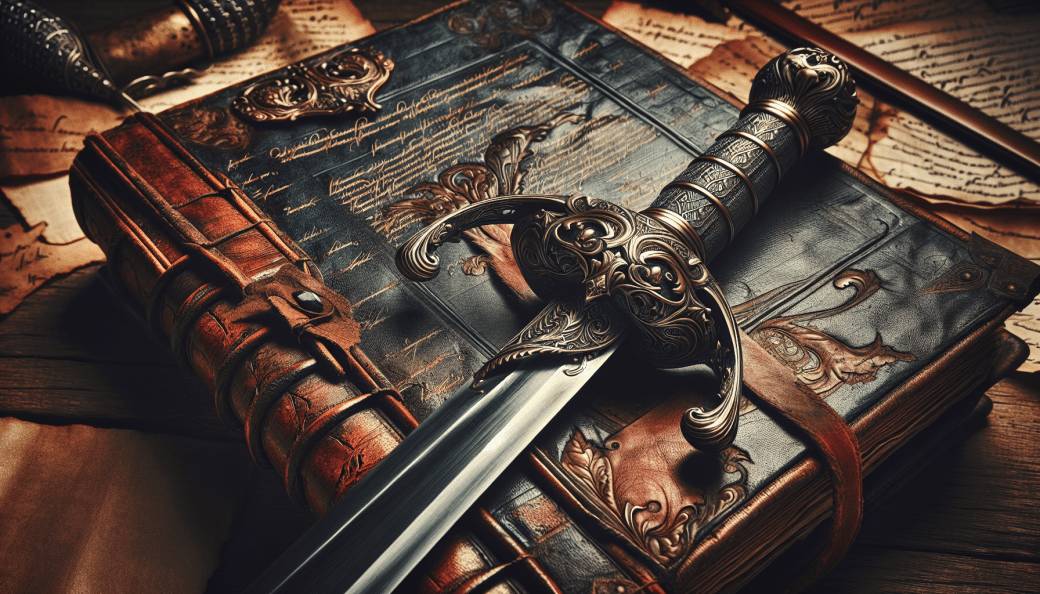If you’ve ever been fascinated by the history and artistry of fencing, then “Dueling Chronicles: Firsthand Tales of Historical Fencing Insights” is the article for you. Dive into the world of historical fencing as this captivating piece takes you on a journey through the fascinating stories and experiences of those who have dedicated themselves to this ancient sport. From the techniques and strategies of famous fencers to the intricacies of different sword types, this article provides a comprehensive overview of the world of historical fencing. Gain a deeper understanding of this art form and discover why it continues to captivate both enthusiasts and historians alike.
Introduction
Welcome to Duelling Chronicles, where we delve into the fascinating world of historical fencing. Whether you’re a history enthusiast or a fan of swordplay, this article will take you on a journey through the origins, techniques, and cultural significance of this ancient martial art. From medieval knights to Renaissance duelists, historical fencing offers a window into the past and a means to preserve and revive ancient traditions. So grab your sword and let’s explore the art of historical fencing together!
What is Historical Fencing?
Definition
Historical fencing, also known as historical European martial arts (HEMA), is a discipline that seeks to reconstruct and practice the combat techniques of past eras. Unlike modern sport fencing, which has evolved into a standardized sport with its own rules and equipment, historical fencing aims to recreate the martial techniques of various historical periods, such as the Middle Ages, the Renaissance, and the Baroque era.
Historical Context
To truly understand historical fencing, it’s essential to examine its historical context. In the Middle Ages and Renaissance, personal combat was a necessary skill for knights, soldiers, and civilians alike. Fencing techniques were taught as a means of survival, and many treatises on swordplay were written during these times. These treatises serve as invaluable sources for modern practitioners, providing detailed instructions on various techniques, stances, and maneuvers.

The Evolution of Historical Fencing
Early Origins
The origins of historical fencing can be traced back to ancient times, with evidence of swordplay and weapon training found in civilizations such as Ancient Egypt and Greece. However, it was during the Middle Ages that swordsmanship truly flourished as a distinct martial art. Knights and nobles trained extensively in the use of swords, axes, and other weapons, and combat techniques were passed down through generations.
Development of Different Styles
As time progressed, different styles of swordsmanship emerged, each with its own techniques and philosophies. For example, the Italian school of fencing focused on the use of the rapier, a slender and agile sword ideal for both thrusting and cutting. On the other hand, the German school emphasized a more robust and aggressive style, employing longswords and emphasizing power and control. These diverse styles reflect the cultural and regional differences of the time, offering unique insights into historical combat techniques.
Weapons Used in Historical Fencing
Swords
Swords are perhaps the most iconic weapons associated with historical fencing. These versatile weapons vary in design and usage depending on the historical period. From the broadswords of the medieval knights to the elegant rapiers of the Renaissance, swords were central to personal combat throughout history. Fencing techniques with swords involve both offensive and defensive maneuvers, requiring precise footwork, timing, and coordination.
Rapiers
Rapiers, with their slender blades and complex hilt designs, became popular during the 16th and 17th centuries. These nimble weapons were often used in civilian duels and became emblematic of the elegant and sophisticated style of Renaissance swordplay. Fencing with rapiers required finesse, quick reflexes, and a deep understanding of thrusting techniques.
Daggers
In addition to swords, daggers played a crucial role in historical fencing. Daggers were often used as a secondary weapon or in close-quarter combat when the sword was rendered impractical. Dagger techniques focused on quick strikes, parries, and grappling techniques, making it an essential skill for any practitioner of historical fencing.

Training Techniques in Historical Fencing
Footwork
Footwork is the foundation of any martial art, and historical fencing is no exception. Proper footwork allows fencers to move swiftly, maintain balance, and execute techniques with precision. Techniques such as lunges, steps, and shifts in weight are all integral to successful swordplay. Masters of historical fencing emphasized the importance of footwork, recognizing its role in creating advantageous positions and avoiding attacks.
Grips and Guards
Different fencing styles utilize various grips and guards to optimize weapon control and defense. The grip refers to how the sword is held, with options such as the hammer grip, the thumb grip, and the V-grip. Guards, on the other hand, refer to the position of the sword when not engaged in an attack or defense. Examples of guards include the low guard, high guard, and the hanging guard. Mastery of the grip and guard techniques allows fencers to transition seamlessly between offensive and defensive actions.
Strikes and Parries
Strikes and parries are the heart of historical fencing techniques. Strikes are offensive actions aimed at delivering a blow to the opponent, while parries are defensive actions intended to block or redirect an attack. Historical treatises outline a myriad of strikes and parries, each with its own purpose and strategic value. This intricate interplay between striking and parrying creates a dynamic and fluid combat style unique to historical fencing.
The Art of Dueling
Code of Conduct
Dueling was a prominent aspect of historical fencing, serving as a means to settle disputes and test one’s martial prowess. However, duels were governed by strict codes of conduct that emphasized honor, respect, and fairness. The rules of dueling varied depending on the region and time period, but commonly included procedures for issuing challenges, selecting weapons, and conducting the duel itself. These codes of conduct ensured that duels were not simply acts of violence but rather rituals steeped in tradition and societal norms.
Famous Duelists
Throughout history, there have been many renowned duelists who gained fame for their exceptional fencing skills. These individuals became legendary figures, admired for their bravery, technical proficiency, and strategic prowess. One such famous duelist is Ridolfo Capoferro, an Italian fencing master known for his treatise on the rapier. His teachings and expertise have had a lasting impact on the development and understanding of historical fencing techniques.
Historical Fencing Schools and Masters
Prominent Schools
Historical fencing has been taught and practiced by numerous schools and organizations throughout history and continues to be so today. Schools such as the Bolognese School of Fencing in Italy, the English London Masters, and the Spanish School of Fencing were renowned for their distinctive methods and interpretations of historical fencing techniques. These schools not only preserved the ancient art but also contributed to its evolution and refinement over time.
Influential Masters
Masters of historical fencing played a vital role in advancing the art and science of swordplay. They authored treatises, trained students, and fought in renowned duels to showcase their skill. Masters like Johannes Liechtenauer, a German fencing master from the 14th century, and Achille Marozzo, an Italian fencing master from the 16th century, left behind invaluable treatises that form the basis of modern understanding and practice of historical fencing.
Revival and Modern Practice of Historical Fencing
Rediscovery of Historical Manuals
The revival of historical fencing can be attributed to the rediscovery of ancient treatises and manuals. These historical documents, often neglected or forgotten, provide a wealth of knowledge about the techniques and principles of swordplay. In recent years, dedicated scholars and enthusiasts have diligently translated, analyzed, and interpreted these manuals, breathing new life into the ancient art of historical fencing.
Tournaments and Competitions
Modern practitioners of historical fencing have embraced the competitive aspect of the sport, organizing tournaments and competitions that showcase their skills. These events offer fencers the opportunity to test their techniques in controlled environments, adhering to historical rules or modified versions for safety. Tournaments not only foster camaraderie among participants but also promote the ongoing development and refinement of historical fencing techniques.
Benefits of Historical Fencing
Physical Fitness
Engaging in historical fencing provides numerous physical fitness benefits. The practice involves cardiovascular exercise, agility training, and strength building, as fencers must employ a full range of motion and maintain optimal physical condition. The footwork, strikes, and parries involved in historical fencing require coordination, balance, and endurance, contributing to overall fitness and well-being.
Mental Discipline
Historical fencing is not just a physical pursuit; it also requires mental discipline and focus. Practitioners must analyze opponents’ movements and react quickly and strategically. Historical treatises advocate for a calm and focused mindset as fencers engage in combat, emphasizing the importance of maintaining a strong mental state even in high-pressure situations. The mental discipline developed through historical fencing can extend beyond the training room, benefiting practitioners in various aspects of their lives.
Cultural Preservation
By studying and practicing historical fencing, enthusiasts contribute to the preservation of cultural history and traditions. Historical fencing is rooted in centuries of human experience and showcases the martial heritage of different regions and time periods. Through their dedication to preserving and reviving ancient techniques, practitioners of historical fencing ensure that these valuable traditions are not forgotten but rather cherished and passed down to future generations.
Conclusion
Historical fencing offers a captivating journey through time and a chance to experience the combat techniques of our ancestors firsthand. From the origins of swordsmanship in ancient civilizations to the refined techniques of Renaissance masters, the art of historical fencing provides a unique window into the past. Through the rediscovery of historical manuals, the dedication of skilled masters, and the passion of modern practitioners, this ancient martial art continues to thrive and evolve. So whether you’re drawn to the physical challenges, the mental discipline, or the cultural significance, historical fencing beckons you to pick up a sword and become part of a living history.
